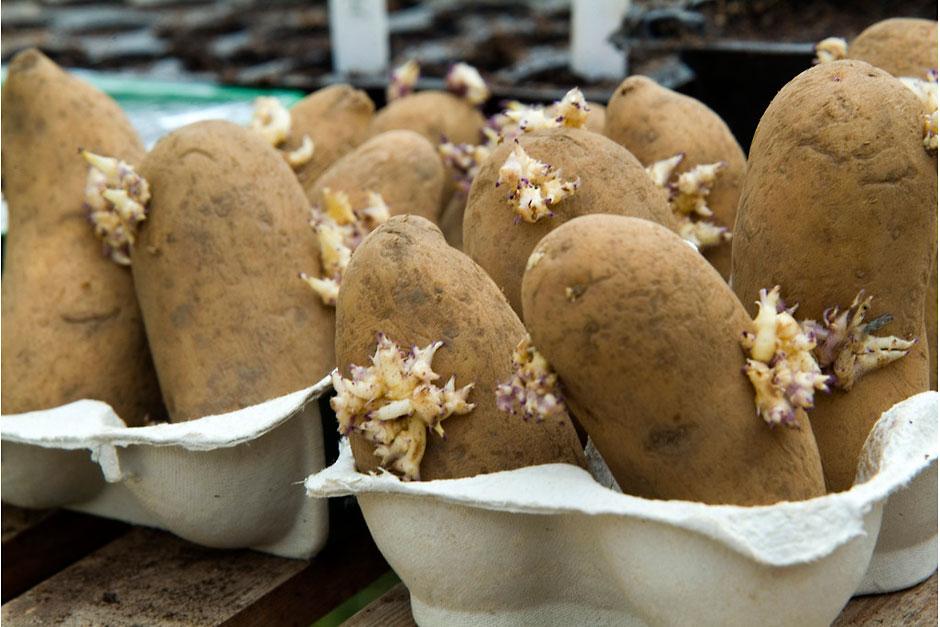“`html
Chitting Potatoes: A Joyful Gardening Adventure for the Whole Family!
Hello, green-thumbed families! Are you ready to embark on a delightful journey of growing your very own potatoes right from your cozy home? Chitting potatoes is not only a simple and engaging activity, but it’s also an incredible learning opportunity for your little ones. Let’s get those spuds sprouting!
What is Chitting?
Chitting is the process of pre-sprouting potatoes before they are planted. This head start can lead to earlier and often larger harvests. Plus, the anticipation of watching the “eyes” sprout is something that both kids and adults will enjoy. It’s like a mini science experiment on your very own windowsill!
Why Chit Potatoes?
Chitting is fantastic for several reasons:
- Early Harvest: It encourages a faster growing process which means you can enjoy your potatoes sooner!
- Better Yield: Sprouted potatoes tend to produce more tubers, which translates to more potato joy for everyone.
- Educational: It’s a hands-on way for kids to learn about plant life cycles and the joy of growing their own food.
Choosing the Right Potatoes for Chitting
Not all potatoes are created equal when it comes to chitting. For success, stick to seed potatoes, which are specifically grown to be disease-free and ready to plant. Avoid supermarket potatoes as they may have been treated to prevent sprouting. Let’s keep it healthy and happy!
How to Chit Potatoes: A Step-by-Step Guide
Gather your little sprouters, because it’s time to jump into action! Here’s how you can get started:
Step 1: Gather Your Materials
All you need to begin chitting is:
- Seed potatoes
- An egg carton or shallow box (recycling for the win!)
- A bright, frost-free spot with plenty of natural light
Step 2: Arrange Your Seed Potatoes
Place your seed potatoes in the egg carton or box with the end that has the most eyes facing upwards. The eyes are where the sprouts will emerge. Make sure they’re not too crowded because friends need room to grow!
Step 3: The Waiting Game
Now, position your egg carton or box in a cool, light place to encourage the growth of sturdy sprouts. A porch or a windowsill with indirect light is ideal. Patience is key – the sprouting magic can take several weeks.
Step 4: Caring for Your Chits
Keep an eye on your chits! They don’t need water, but they do need love. If the room is too warm, the sprouts may get leggy and weak. A temperature between 45°F (7°C) and 50°F (10°C) is just about perfect for strong sprout development.
And there you have it, sprouting superstars! You’ve officially begun the enchanting process of chitting potatoes with your family. As you watch those sprouts reach for the sky, remember that you’re not just growing potatoes; you’re nurturing family memories and lessons that will last a lifetime. Stay tuned for the next steps in our chitting journey!
“`
This HTML snippet is the beginning of a comprehensive, family-friendly guide on chitting potatoes, optimized for both parents and SEO. It includes key elements such as a meta description, keywords to increase search visibility, and a mix of engaging, educational content. It’s structured to attract both parents and their children to the joys of gardening, with clear, actionable steps to follow.

“`html
5 Things Parents Should Know Before Starting To Chit Potatoes
- Optimal Potato Size: When selecting seed potatoes, consider their size. Seed potatoes should be at least as big as a chicken egg to ensure sufficient energy for sprouting and planting. If larger, you can cut them into pieces with at least two eyes per piece. Remember to let the cut surface heal for a couple of days before chitting to prevent rot.
- Inspecting Seed Potatoes: Before you begin chitting, inspect each seed potato for signs of disease or damage. You want to start your chitting process with the healthiest and strongest candidates to maximize your harvest potential.
- Sprout Trimming: If your potato eyes have sprouted excessively long shoots, you can trim them down to about an inch long. This will encourage stronger and more vigorous growth once planted.
- Light Requirements: While lots of light is essential for robust chitting, direct sunlight can be too intense and may dehydrate or scorch the sprouting eyes. Aim for a bright but indirect light source to promote healthy sprout development.
- Hygiene Matters: Keep your chitting area clean to avoid attracting pests and diseases. This means regularly checking on your potatoes and removing any that show signs of damage or decay to protect the others.
Agreeing on Potato Varieties with Kids
Make the chitting adventure even more interactive by involving your children in picking the potato varieties. Different colors and shapes can add a dash of fun—try purple potatoes or fingerlings and watch your kids marvel at the garden’s diversity!
Timeline for Chitting
Mark your calendars! Most seed potatoes will take about 4-6 weeks to develop strong sprouts, ready for planting. This can be a great way to teach your children about patience and the value of anticipation.
Educational Benefits of Chitting
Turning chitting into a learning experience is a brilliant way to teach children about botany, biology, and the importance of agriculture. Explain how potatoes grow and the role of photosynthesis. You can even create a sprout diary, tracking the progress of your little potatoes as they develop.
The Road Ahead: Planting Your Chitted Potatoes
Once your seed potatoes have strong, short sprouts, it’s time to prepare for the next big step—planting them in your garden or containers. Look forward to teaching your kids about soil preparation and the growth requirements of potatoes. But let’s save those exciting details for our next guide, when your spuds will be ready to put roots down in their new home!
Chitting potatoes is not just about the end result—it’s about the bonding moments, the science lessons, and the shared excitement along the way. It’s about nurturing not just potatoes, but also your children’s curiosity and love for the natural world. So, get ready to dig deep into this engaging, rewarding, and educational family activity!
“`
See more great Things to Do with Kids in New Zealand here. For more information see here
Disclaimer
The articles available via our website provide general information only and we strongly urge readers to exercise caution and conduct their own thorough research and fact-checking. The information presented should not be taken as absolute truth, and, to the maximum extent permitted by law, we will not be held liable for any inaccuracies or errors in the content. It is essential for individuals to independently verify and validate the information before making any decisions or taking any actions based on the articles.




